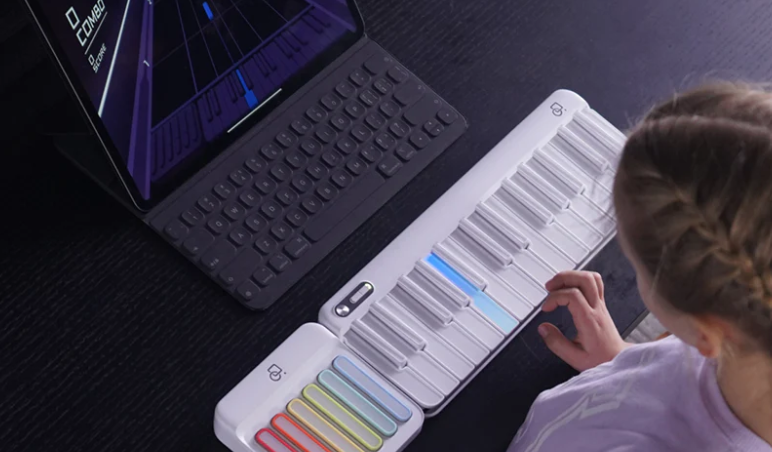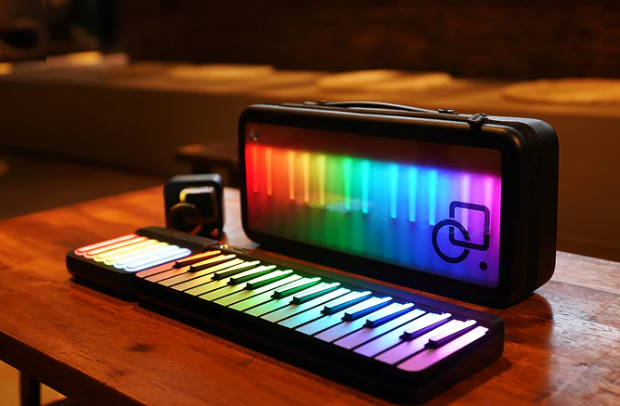
Learning piano on a full‑sized, weighted keyboard feels wonderfully close to an acoustic instrument—you get the same span, the same resistance under your fingertips, and the same “Yes, I’m really doing this!” excitement. But let’s be honest: the market’s crammed with choices, and spec sheets can get pretty dense.
Below you’ll find a no‑fluff guide that walks you through must‑know buying factors and highlights our favorite beginner‑friendly 88‑key weighted models of 2025. Grab a mug of something cozy, settle in, and let’s make sure you pick a board that’ll keep you practicing long after the honeymoon phase.
|
Rank |
Model |
Why It Shines |
Street Price (USD) |
|
1 |
Yamaha P‑145 |
GHS graded action in an ultra‑compact slab |
~$499 |
|
2 |
Roland FP‑10 |
Expressive PHA‑4 keys + Bluetooth MIDI |
~$599 |
|
3 |
Casio Privia PX‑S1100 |
Slimmest 88‑key chassis, textured keys feel luxe |
~$699 |
|
4 |
Korg B2 |
Natural‑Hammer action with punchy German piano sample |
~$599 |
|
5 |
PopuPiano Smart Keyboard Bundle (main + Expansion Keyboard) |
Modular design lets you grow from 24 keys to a full 88 |
From ~$424 (main) + $239 (per 24‑key add‑on) |
|
6 |
Donner DEP‑20X |
Budget beast with dual 20 W speakers |
~$399 |
Think of polyphony as how many notes the engine can juggle at once. Layer a pad under the piano voice or pedal through Debussy and you’ll want at least 128‑note polyphony to avoid note dropouts.
A portable “slab” piano weighs 25–35 lb and slips into closets or car trunks. Console‑style cabinets look classier and include triple pedals but cost extra and are heavy. Beginners in shared apartments often start with a slab on an X‑stand.
Sticker shock is real, but most major brands partner with Klarna, Affirm, or Shop Pay to split payments with no interest if you qualify. PopuMusic, for instance, lets you snag an expansion keyboard for roughly $22 a month—neat.
Yamaha trimmed the chassis of its cult‑favorite P‑45, slapped in a cleaner sample engine, and released the P‑145. You still get GHS graded action, 192‑note polyphony, a built‑in metronome, and that unmistakable Yamaha “CFX‑lite” piano tone. Speakers won’t rattle the walls, but headphone practice feels wonderfully immersive. The icing? A single USB‑C port that handles both MIDI and audio—no extra interface needed.
Ideal for: Students who want a no‑nonsense practice piano that’s light enough for weekend jam sessions.
Roland’s entry FP wears the same PHA‑4 Standard action found in pricier siblings, complete with simulated escapement and ivory‑feel keytops. The SuperNATURAL sound engine reacts beautifully to soft passages; pair Bluetooth MIDI with Roland’s Piano Every Day app and you’ve got instant practice tracking. And yes, you can split or layer sounds (piano + strings still gives goosebumps).
Ideal for: Players who value nuanced touch and plan to experiment with creative apps.
Only 232 mm deep, the PX‑S1100 slides onto narrow desks yet packs Smart Scaled Hammer Action keys coated in subtle simulated ebony/ivory. Casio revamped the speaker amps for 2025, so it’s punchier than the outgoing S1000. You also get Bluetooth audio streaming—great for jamming along to Spotify without extra cables.
Ideal for: Dorm‑dwellers or anyone chasing minimalism without sacrificing feel.
If you crave that bright German concert grand tone, the B2 delivers right out of the box. Natural‑Hammer keys feel a touch lighter than Yamaha’s but still firmly weighted. Korg bundles a generous software pack (Skoove lessons, Korg Module LE) and tosses in a USB‑B port for DAW integration. Setup literally takes five minutes.
Ideal for: Beginners who want rich preset sounds and zero menu‑diving.
Maybe you’re not ready to commit to a seven‑foot‑long board. PopuMusic’s solution: start with a 24‑key smart keyboard that teaches chords via colorful LED‑lit keys, then magnetically snap on the Expansion Keyboard modules until you hit the full 88. Each add‑on includes its own plush carrying bag, and the PopuMusic app gamifies practice with real‑time feedback and chart‑style challenges.
Pros
Cons
Ideal for: Visual learners, kids, or travelers who want true portability without skimping on full‑range potential.
Donner keeps refining its flagship slab, and the 20X iteration finally nails velocity sensitivity. You get 200 tones, 238 rhythms, a beefy 128‑note polyphony engine, and dual headphones jacks—perfect for late‑night teacher‑student sessions. Yes, speakers distort above 80 percent, but for sub‑$400, it’s wildly capable.
Ideal for: Families testing the musical waters without emptying the rainy‑day fund.
And practice tomorrow you will.
Picking the best 88‑key weighted keyboard for beginners is less about chasing the fanciest feature sheet and more about finding a board that invites daily play. If money’s tight, the Donner DEP‑20X proves you don’t need to spend a fortune. Craving authentic piano response? The Yamaha P‑145 and Roland FP‑10 stand tall. Minimalist apartment? Casio’s PX‑S1100 squeezes into almost any nook. Want something modular and playful? PopuMusic’s snap‑on Expansion Keyboard might be your new obsession.
Whichever route you take, trust your ears, trust your hands, and remember: every practice session is a tiny concert just for you. Enjoy the show—and keep those fingers dancing.
If budget and space allow, absolutely. Starting on fewer keys often means relearning fingerings later. Plus, music composed for classical exams or pop covers frequently dips into extremes you won’t have on a 61‑key board.
Semi‑weighted keys use lighter springs; they’re better than synth‑style actions but still easier to bottom out.
They are slightly heavier, yes, but that extra resistance builds finger muscles and improves dynamic control. Most new players adjust within a week.
Portable slabs typically house 6–16 W total. Enough for a bedroom, not enough for a café gig. If live performance is on your radar, choose a model with ¼‑inch line outputs and plan on a keyboard amp.
Definitely. All the models above offer USB‑MIDI, and several (Roland FP‑10, Casio PX‑S1100, PopuPiano) also include Bluetooth MIDI or audio for wireless practice.
Leer más

Best Keyboard Picks Under 500 USD That Are Fun for Beginners and Families
Scrolling through online music shops can feel like falling into a black hole of specs and sales banners. If your budget tops out at fifty dollars—and you’re hunting a first keyboard for yourself, t...

Is Keyboard and Piano the Same? Key Differences Explained Simply
You’ve decided to start making music—fantastic!—but the moment you search for “beginner piano,” two very similar‑looking instruments pop up: the acoustic piano and the digital keyboard. They share ...